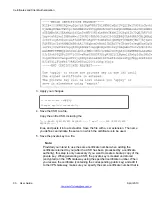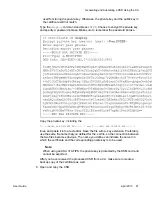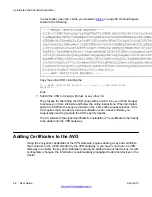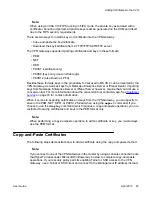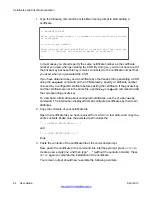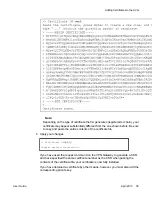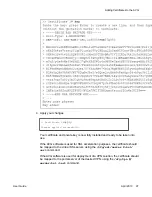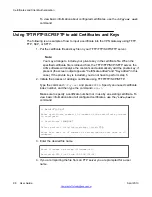
The following example refers to a virtual SSL server used for SSL acceleration. To
map the certificate to a portal server in a VPN, use the
/cfg/vpn #/
server/ssl/cert
command.
>> Configuration#
ssl/server
Enter virtual server number: (1-256)
1
>> Server 1#
ssl
>> SSL Settings#
cert
Current value: 2
Enter certificate number: (1-1500)
3
After you have tested that the new certificate works fine you may delete the old
certificate(s).
Configure a Virtual SSL Server to Require a Client
Certificate
This section describes how to configure client certificate authentication when the VPN Gateway
is used for SSL acceleration.
Note:
For information about how to configure client certificate authentication in conjunction with
VPN deployment, see the "Authentication Methods" chapter in the
Application Guide for
VPN
.
As explained previously in this chapter, each virtual SSL server on the VPN Gateway should
be configured to use a server certificate to authenticate itself towards the clients. Besides, the
server can be configured to require client certificates to authenticate clients before granting
access to the requested service.
When a server is set to require client certificates, a CertificateRequest message is sent from
the server to the client during the SSL handshake. The client responds by sending its public
key certificate in a Certificate message. After that, the client will send a CertificateVerify
message to the server. The CertificateVerify message is signed by using the clients private
key, and contains important information about the SSL session known to both the client and
the server. Upon receiving the CertificateVerify message, the virtual SSL server will use the
public key from the client certificate to authenticate the client's identity.
The virtual SSL server will also check if the certificate the client presents is signed by an
accepted certificate authority (CA). Accepted certificate authorities are defined by the CA
certificates you have listed on the virtual SSL server. The certificate you use for generating
Configure a Virtual SSL Server to Require a Client Certificate
User Guide
April 2013 101
Содержание 3050-VM
Страница 1: ...User Guide Avaya VPN Gateway Release 9 0 NN46120 104 Issue 04 04 April 2013 ...
Страница 4: ...4 User Guide April 2013 Comments infodev avaya com ...
Страница 12: ...12 User Guide April 2013 ...
Страница 20: ...New in this release 20 User Guide April 2013 Comments infodev avaya com ...
Страница 30: ...Introducing the VPN Gateway 30 User Guide April 2013 Comments infodev avaya com ...
Страница 36: ...Introducing the ASA 310 FIPS 36 User Guide April 2013 Comments infodev avaya com ...
Страница 74: ...Upgrading the AVG Software 74 User Guide April 2013 Comments infodev avaya com ...
Страница 86: ...Managing Users and Groups 86 User Guide April 2013 Comments infodev avaya com ...
Страница 130: ...The Command Line Interface 130 User Guide April 2013 Comments infodev avaya com ...
Страница 162: ...Supported Ciphers 162 User Guide April 2013 Comments infodev avaya com ...
Страница 212: ...Syslog Messages 212 User Guide April 2013 Comments infodev avaya com ...
Страница 242: ...Definition of Key Codes 242 User Guide April 2013 Comments infodev avaya com ...
Страница 259: ...Creating a Port Forwarder Authenticator User Guide April 2013 259 ...
Страница 265: ...This will print current statistics every 3 seconds Monitoring the Port Forwarder User Guide April 2013 265 ...
Страница 266: ...Using the Port Forwarder API 266 User Guide April 2013 Comments infodev avaya com ...
Страница 274: ...X 509 274 User Guide April 2013 Comments infodev avaya com ...




